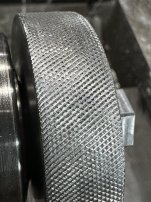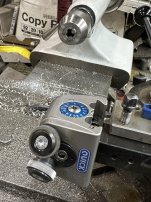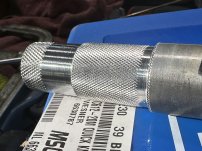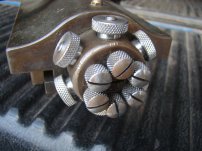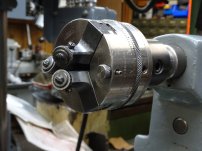trirotor
Plastic
- Joined
- May 18, 2024
- Location
- Milwaukee, WI
Hello all! I like to machine parts for a multitude of things. I would consider myself a hobbyist. I finally purchased a Quick cut knurling tool for diamond style knurling. I am using this on a manual Hardinge HLV-H. I need to knurl a 6061 aluminum tool / knob/ hand-grip thing. Its 2.5" diameter and about .750 wide. I'm using .8mm pitch cutter wheels. The problem I am having is that I get a near perfect pyramid for the first .250", and then I start to loose the peaks after that, all the way to the end. I did some practicing on different diameters and with multiple pitches, and got great consistent patterns. Why does the nice cut stop half way thru now?